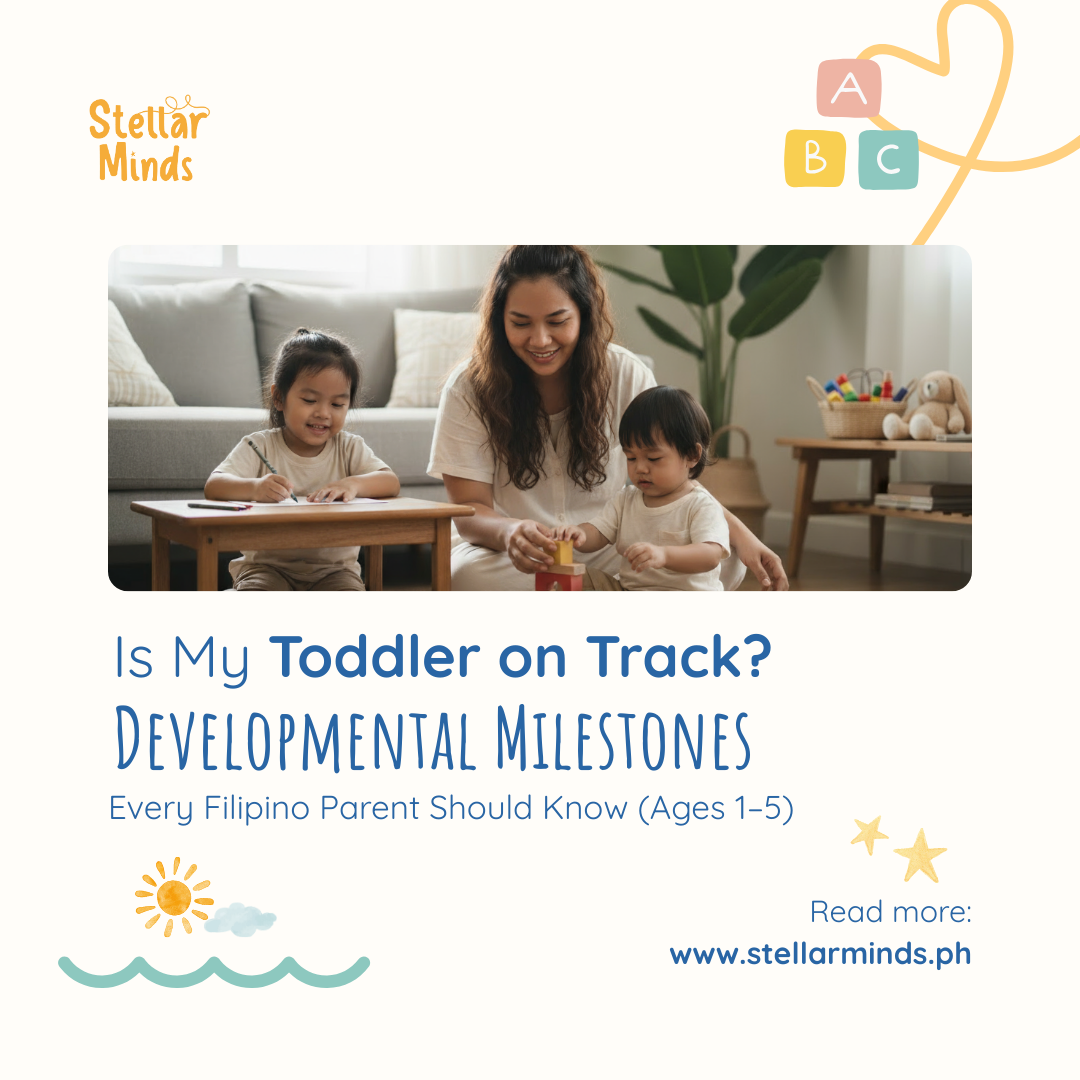
How to Boost Your Toddler’s Speech, According to Dr. Patricia Kuhl
Share
As Filipino moms, we’re always excited to hear our toddlers say their first words.. “Mama,” “dada,” “lola,” or even a cute mispronunciation that makes us smile. But did you know that your child’s brain is already tracking and recording sounds long before they can speak?
Dr. Patricia Kuhl, a leading researcher in child language development, shares practical ways we can help our toddlers grow into confident speakers. Here are simple, science-backed tips you can try at home.
Tip 1: Speak in Parentese
Parentese is a melodic, sing-song way of speaking that emphasizes clear vowels and slower speech. Unlike “baby talk,” parentese helps toddlers recognize and copy real words faster.
Example: Instead of saying, “coochie-coo,” you can say, “We’re cooooking together… Hiiiiii beybeeee!” in a slow, exaggerated, and musical tone.

Tip #2: Practice Face-to-Face Turn-Taking
Toddlers learn language through interaction, not just listening passively. You can encourage this by:
-
Looking – Make warm eye contact so your toddler feels invited.
-
Speaking – Use short, simple phrases like “red bag, pack, pack.”
-
Pausing – Wait 2–3 seconds for them to respond, even with just a sound.


Tip #3: Narrate Your Day
Your everyday activities can turn into learning opportunities. Talk about what’s happening in real time.
Example in Filipino: “Nag-huhugas na si mommy… tapos pinupunasan ko siya.”
This shows your toddler how words connect to actions, making vocabulary more meaningful.
Tip #4: Read Rhythmic & Repetitive Books
Books with predictable lines (like Brown Bear, Brown Bear, What Do You See?) strengthen memory. The rhythm and repetition allow toddlers to anticipate words, giving them confidence to join in.
Tip: Repeat favorite books often, rhythm makes words “stick.”

Tip #5: Sing Songs & Rhymes
Singing exaggerates pitch and rhythm, which keeps toddlers engaged longer. More attention means their brain has more “data” to process speech sounds.
From nursery rhymes to Filipino favorites like “Bahay Kubo” or “Ako ay May Lobo” singing is both fun and brain-boosting.
Final Thoughts
Helping your toddler’s speech doesn’t require expensive tools. It’s all about how you connect with them daily. Whether you’re singing, reading, or simply talking about chores, every interaction builds their foundation for communication.
So next time your little one babbles back, pause, smile, and continue the conversation... Because in those small exchanges, you’re shaping their language for life.



